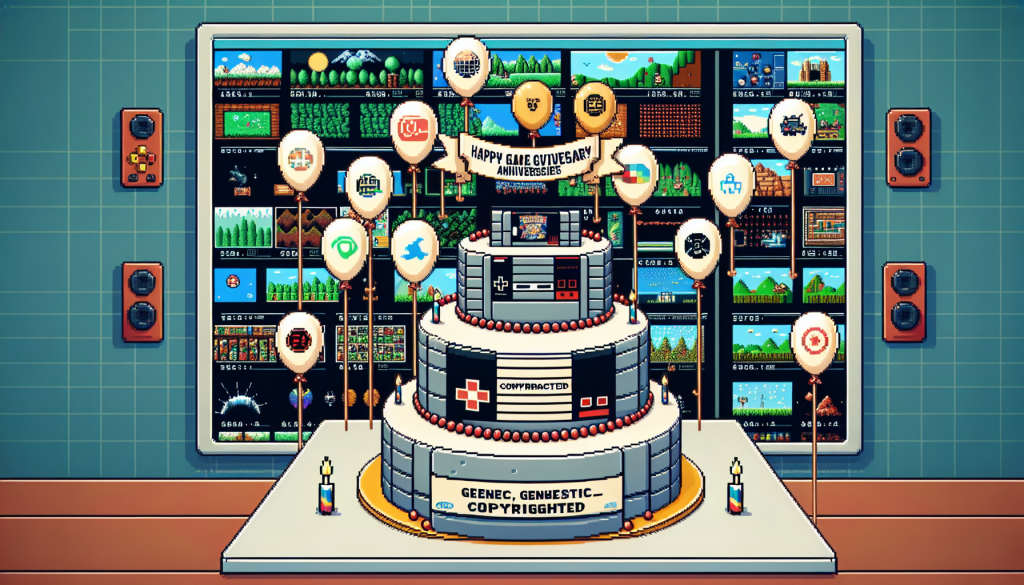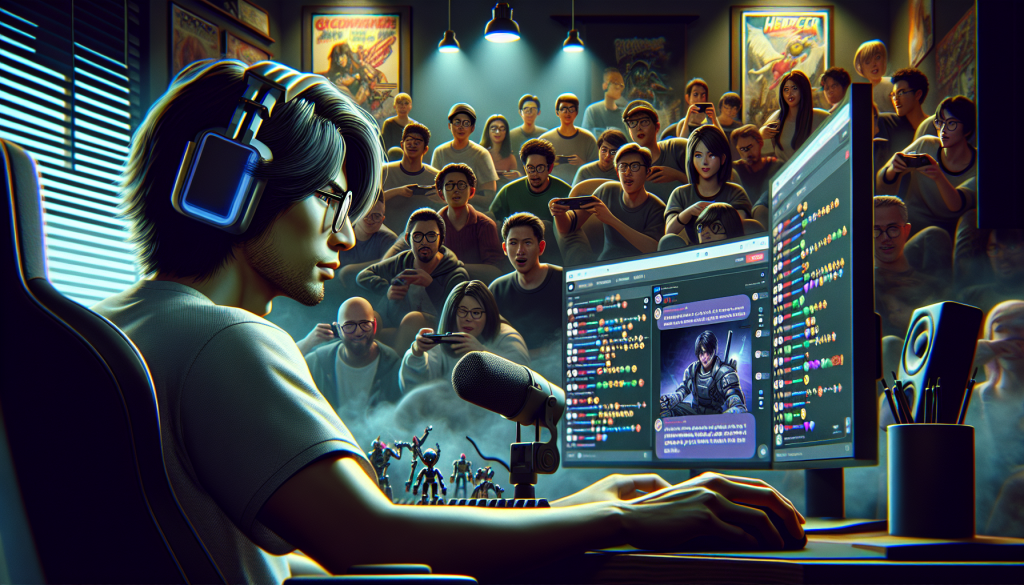Leveraging Nostalgia: Tapping into the Emotional Connection with Classic Video Games
Remember the hours spent huddled in front of the TV, joystick in hand, engrossed in the pixelated adventures of your favorite video game characters? Whether it was rescuing Princess Peach in Super Mario Bros or battling the forces of evil in The Legend of Zelda, those classic video games hold a special place in our hearts. And it’s not just us – there’s a whole community of gamers who share that same nostalgic connection.
As a marketer, tapping into that nostalgia can be a powerful tool in engaging with your target audience. By leveraging the emotional connection that people have to these classic video games, you can create marketing campaigns that resonate on a deeper level. So, how can you effectively tap into that nostalgia? Let’s take a look.
1. Use Familiar Themes and Imagery
One of the easiest ways to tap into nostalgia is by using familiar themes and imagery from classic video games. Incorporate elements like pixel art, retro sound effects, or even iconic characters into your marketing materials. This will instantly trigger feelings of nostalgia and create a sense of familiarity and comfort for your audience.
For example, if you’re promoting a new product, consider using a retro-inspired design that pays homage to classic video games. This will not only catch the attention of gamers who have a fondness for that era but will also create a sense of excitement and curiosity among those who may not be familiar with the games themselves.
2. Create Interactive Experiences
Another way to tap into nostalgia is by creating interactive experiences that allow your audience to relive the joy of playing classic video games. This could be through mini-games, quizzes, or even virtual reality experiences that transport them back to those simpler times.
By immersing your audience in these interactive experiences, you’re not only engaging them with your brand but also creating a memorable and enjoyable experience that they will associate with positive emotions. This can lead to a stronger connection with your brand and a higher likelihood of them becoming loyal customers.
3. Collaborate with Influencers and Content Creators
When it comes to tapping into nostalgia, collaborating with influencers and content creators who have a passion for classic video games can be a game-changer. These individuals have built a loyal following who trust their opinions and recommendations.
By partnering with influencers and content creators, you can leverage their expertise and credibility to promote your brand in a way that feels authentic and genuine. This will not only help you reach a wider audience but also tap into the nostalgia of their followers who share the same love for classic video games.
4. Organize Events and Competitions
Nothing brings people together quite like the excitement of a friendly competition or a shared experience. Organizing events and competitions centered around classic video games can be a great way to tap into nostalgia and create a sense of community among your target audience.
Whether it’s a gaming tournament, a cosplay contest, or a retro gaming convention, these events provide an opportunity for gamers to connect with each other and celebrate their love for classic video games. By associating your brand with these events, you can build a strong sense of loyalty and community among your target audience.
Tapping into the emotional connection that people have with classic video games can be a powerful tool in your marketing arsenal. By using familiar themes and imagery, creating interactive experiences, collaborating with influencers, and organizing events, you can effectively tap into nostalgia and create marketing campaigns that resonate with your audience on a deeper level.
Creating Memorable Characters and Storylines: The Power of Engaging Narratives in Marketing
When it comes to marketing, there’s one thing that’s always been true: storytelling sells. And in the world of video games, this couldn’t be more evident. Video games have been captivating players for decades by immersing them in rich and engaging narratives, complete with unforgettable characters and storylines. As marketers, there’s a lot we can learn from the power of storytelling in video games.
Think about some of the most successful video game franchises of all time: Super Mario, The Legend of Zelda, and Final Fantasy, just to name a few. What do they all have in common? Memorable characters and captivating storylines. These games have taken players on incredible journeys, allowing them to form deep emotional connections with the characters they encounter along the way.
So how can we apply this to our marketing efforts? It’s simple: we need to create characters and storylines that resonate with our audience. By developing relatable and likable characters, we can tap into the emotional connection that players feel with their favorite video game protagonists. These characters can become the face of our brand, helping to build recognition and loyalty among consumers.
But it’s not just about the characters themselves; the storylines they inhabit are equally important. Just like in a video game, a well-crafted narrative can keep consumers engaged and eager to learn more. It can create a sense of anticipation and excitement, making them more likely to stick around and see what happens next. By incorporating storytelling into our marketing campaigns, we can create a sense of adventure and intrigue that keeps our audience coming back for more.
So, how do we go about creating memorable characters and storylines? One way is to think about the values and aspirations of our target audience. What kind of characters would they relate to? What kind of stories would resonate with them? By understanding our audience on a deeper level, we can create characters and narratives that speak directly to their desires and interests.
Another important aspect to consider is consistency. Just like in a video game, our characters and storylines need to be consistent throughout our marketing efforts. This means maintaining the same tone, style, and personality across all channels and touchpoints. Consistency helps to reinforce the emotional connection that consumers have with our brand, ensuring that they recognize and engage with our messaging wherever they encounter it.
In conclusion, creating memorable characters and storylines is a powerful marketing strategy that can help to build recognition, loyalty, and engagement. By tapping into the emotional connection that players feel with their favorite video game characters, we can create a similar bond with our audience. By developing relatable characters and captivating narratives, we can keep consumers engaged and eager to see what happens next. So let’s take a page from the video game playbook and start telling stories that captivate and inspire our audience.
Hey there, gamers! Are you ready to level up your marketing game? Well, get ready to dive into the world of gamification and interactive experiences. In this article, we’re going to explore how you can engage your consumers through playful marketing strategies.
What is Gamification?
Gamification is the process of incorporating game elements into non-gaming contexts, such as marketing campaigns. By leveraging the principles of games, marketers can make their strategies more interactive, engaging, and fun for their target audience.
The Power of Play
When it comes to marketing, playfulness and interactivity can go a long way in capturing the attention and interest of consumers. By incorporating elements of play into your marketing strategies, you can create memorable experiences that not only entertain but also leave a lasting impression.
Think about it – when you’re playing a game, you’re fully immersed in the experience. Your focus is on achieving goals, overcoming challenges, and enjoying the process. This level of engagement is what marketers strive for. By bringing elements of gameplay into your marketing, you can tap into this sense of immersion and captivate your audience.
Engaging Through Interactive Experiences
One of the most effective ways to incorporate gamification into your marketing is by creating interactive experiences. This can be done through various mediums such as mobile apps, online quizzes, or even augmented reality games. The key is to provide your audience with a platform where they can actively participate and engage with your brand.
For example, let’s say you’re a fashion brand looking to promote a new collection. Instead of simply showcasing the products on your website, why not create a virtual dressing room where users can try on different outfits using augmented reality? This not only allows your audience to interact with your brand in a fun and engaging way but also helps them visualize how your products would look on them.
Another way to create interactive experiences is through online quizzes or games. For instance, a food brand could develop a “Which Celebrity Chef Are You?” quiz that not only entertains but also educates consumers about their product range. By offering interactive and personalized experiences, you can foster a deeper connection between your audience and your brand.
Driving Consumer Engagement
Gamification not only increases consumer engagement but also encourages social sharing. When people have fun experiences with a brand, they are more likely to share their experiences with their friends and family. This word-of-mouth marketing can be incredibly valuable for your brand’s visibility and reach.
Additionally, by incorporating interactive elements into your marketing strategies, you can gather valuable data and insights about your target audience. For example, by analyzing the choices users make in an interactive quiz, you can gain insights into their preferences, interests, and behaviors. This data can then be used to refine your marketing campaigns and tailor your offerings to better meet the needs and desires of your consumers.
Bringing It All Together
Gamification and interactive experiences are powerful tools that can take your marketing to the next level. By incorporating elements of play and interactivity, you can create memorable experiences that engage your audience, drive consumer engagement, and build brand loyalty. So, get ready to level up your marketing game and start exploring the endless possibilities of gamification!












